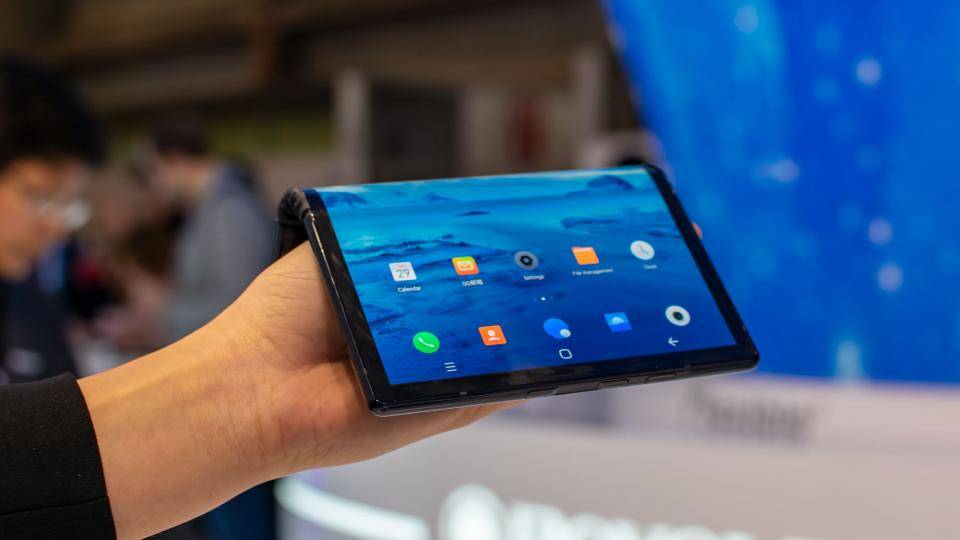The moment you get your hands on the Royole FlexPai , it’s clear that this is still a technology in development. There are many aspects of the design that work well, but others that show its current limits.
First, the positives. Colours are surprisingly vivid – not quite up there with AMOLED screens, but a match for most phones on the market. It also folds flat when in tablet mode. Get Netflix working and this would be an excellent way to watch films. (Well, so long as you don’t want colour accuracy, but we’ll come to that.)
READ NEXT: Best smartphones
We also like the fact you can put it into tent mode and then rest it on your desk or bedside table. Bearing in mind that most of us sleep with a phone next to us on the bed, why not use it exactly as you would an alarm clock? And when you’re ready to nip downstairs for breakfast, fold it in two and slide it into your pocket. Or dressing gown pocket. We won’t judge.

What doesn’t work so well
It fits in a pocket perfectly well. However, the air gap between the two sides when folded means it’s considerably bigger than a normal phone. One Royole rep on the company’s CES stand described it as the size of a phone and the thickness of a wallet. But a wallet packed with receipts and business cards.
I think I could live with this. My biggest issue is the image quality. For those with long memories, there’s a hint of the active matrix screens we saw on the first colour PDAs, and one sample on show suffered from burn-in of background images. That was probably due to it being left on for several hours stuck on the same screen, but it emphasises that this is an immature technology compared to the LCDs we’re now used to.
Then there’s the problem that comes with introducing a brand-new format to an industry. Android works perfectly on phones and pretty well on tablets, but this new form factor introduces fresh challenges. What do you do with the edge of the screen when it’s folded in phone mode? Royole has added notifications, but it’s buggy. Think version 0.2 rather than version 2.0.
Cutting some slack
If Royole was pretending that this was the finished article, we’d be far more critical of these faults. In fact, it describes the FlexPai as a developer edition – which makes sense when you look at the bugs I mentioned above. It’s perhaps then a bit cheeky to describe this as the first commercially available foldable phone, but we’ll let that pass.
It’s important to remember that this is really a proof of concept. Royole isn’t a phone manufacturer: it’s a screen maker. And an incredibly innovative one at that. Sure, this first iteration has numerous drawbacks, and I wouldn’t want this to be my phone, but it’s a brilliant innovation – and arguably the most important technology breakthrough on show at CES 2019.